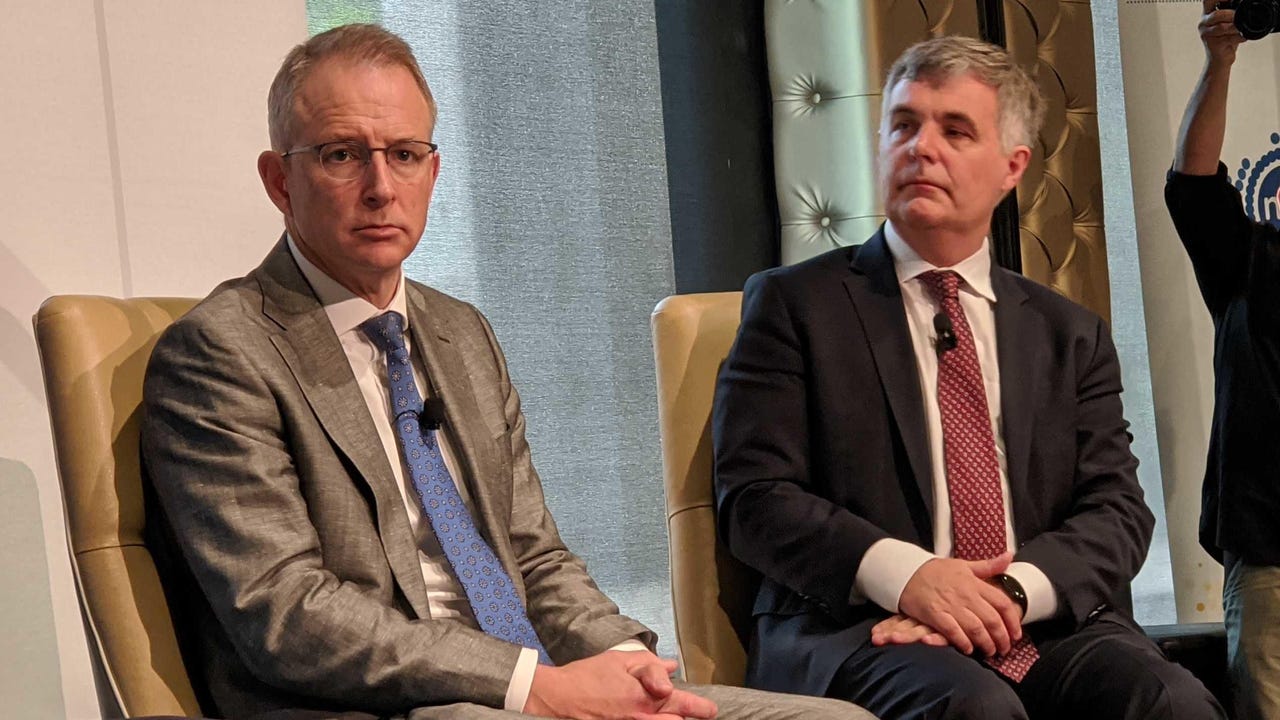Fletcher declares NBN as 'built and fully operational'

Two charismatic gentlemen: Minister Paul Fletcher and NBN CEO Stephen Rue
Australia's Minister for Communications, Cyber Safety and the Arts Paul Fletcher has formally declared that the National Broadband Network (NBN) is "built and fully operational", as one of the first steps towards the eventual sale of the company responsible for the roll out of the NBN.
On Wednesday, Fletcher made the declaration after reviewing a report from NBN on the extent to which the NBN access network is built and fully operational.
"In my view, the evidence before me shows it is appropriate to make the declaration that the NBN should be treated as built and fully operational," he said on Wednesday.
According to Fletcher, he made the declaration on the basis that the number of premises able to connect to the NBN is over 11.86 million, and the number of yet to be ready to connect premises will be reduced from 100,000 as of August 2020 to 35,000 by December 31.
In addition, Fletcher noted that given new premises are being built all the time, there will always be premises that are not yet ready to connect but said it should not be discounted that "network cannot be treated as 'built and fully operational'".
In fact, NBN highlighted in its assessment report [PDF] that in "practical terms", the ready to connect footprint will never be able to reach 100% "due to 'business as usual' reasons such as new developments, updated address data (i.e. appreciation), changes within existing buildings (e.g. partitioning of commercial buildings), and changes to network boundaries".
NBN also said in the report that it is "supporting 50Mbps to more than 90% of the fixed-line footprint and 25Mbps to approximately 98% of all premises, with ongoing proactive and reactive programs in place to resolve the remaining lines".
For the remaining 2% of premises that are still unable to receive a minimum 25Mbps connection, NBN said it will address their issues through its ongoing copper rehabilitation program, its program aimed to remove logical faults that cause crosstalk noise, and by ending co-existence.
"Of course, the government recognises that there are some premises which have not yet been made ready to connect -- and I expect NBN Co to work as speedily as possible to make the network available to those premises," Fletcher said.
"The government also recognises that there is continuing work to enhance the capabilities of the network … Also, in some areas the NBN can only operate at full speed once all legacy copper services are migrated to an NBN or alternative service, which typically takes 18 months from when the NBN commenced services in an area.
"To minimise interference to the legacy services of other carriers during this period, the NBN operates with reduced signal power which reduces network speeds. But this doesn't mean that NBN Co will stop developing.
"I fully expect that the company will operate as a mature entity through continual improvement in the provision of quality services to its broadband retail customers, and ultimately to Australian households and businesses, as well as driving efficiency in its operations."
Just last month, the Australian government paid PricewaterhouseCoopers to develop metrics that conveniently ranked NBN number one when it examined connections that could hit the 25Mbps-capable requirement imposed on NBN.
Read also: NBN rejects speed test reality for one of its own
In September, NBN announced it would spend AU$4.5 billion to allow 75% of its fixed-line network to access 1Gbps speeds by the end of 2023 by upgrading FttN connections on-demand to full-fibre.
Part of the money, up to AU$700 million, will be used to take fibre to businesses and create fibre zones around Australia, with another AU$300 already allocated to fibre upgrades alongside state governments and local councils.
That leaves AU$3.5 billion for residential upgrades.
This announcement was made only after years and years of ridiculous claims, such as those made by then-Shadow Communications Minister cum Prime Minister Malcolm Turnbull in 2011 that there was no evidence end users would receive any benefit from getting access to broadband speeds higher than those available under ADSL2+ technology, or that 1Gbps was a marketing gimmick.
The declaration by the communications minister is one of the steps that must occur under section 48 of the National Broadband Network Companies Act 2011 before the eventual privatisation of NBN, which has been planned since its inception.
The Communications Minister had to make the declaration by December 31, or formally extend the period for which the declaration could be made.
There are a number of other steps, however, that will need to be taken before NBN can be sold, including an inquiry by the Productivity Commission, a Parliamentary Joint Committee review of the commission's report, and the finance minister declaring that sale conditions are suitable.
Respondents to a recent Essential poll revealed that 33% approved the eventual sale of the NBN and 38% said they did not. Broken down by party voting intention, Coalition and Greens voters were the most enthusiastic of selling it at 38%, while supporters of the party that designed the NBN to be sold, the ALP, disagreed the most that it should be sold, with 48% of ALP respondents disapproving a sale.
In age terms, 18-34 year-olds supported the selling off by 45% for and 29% against, with support trending down across the age bands until those aged over 55 who disapproved by a majority of 52%, with only 19% supporting its sale.
